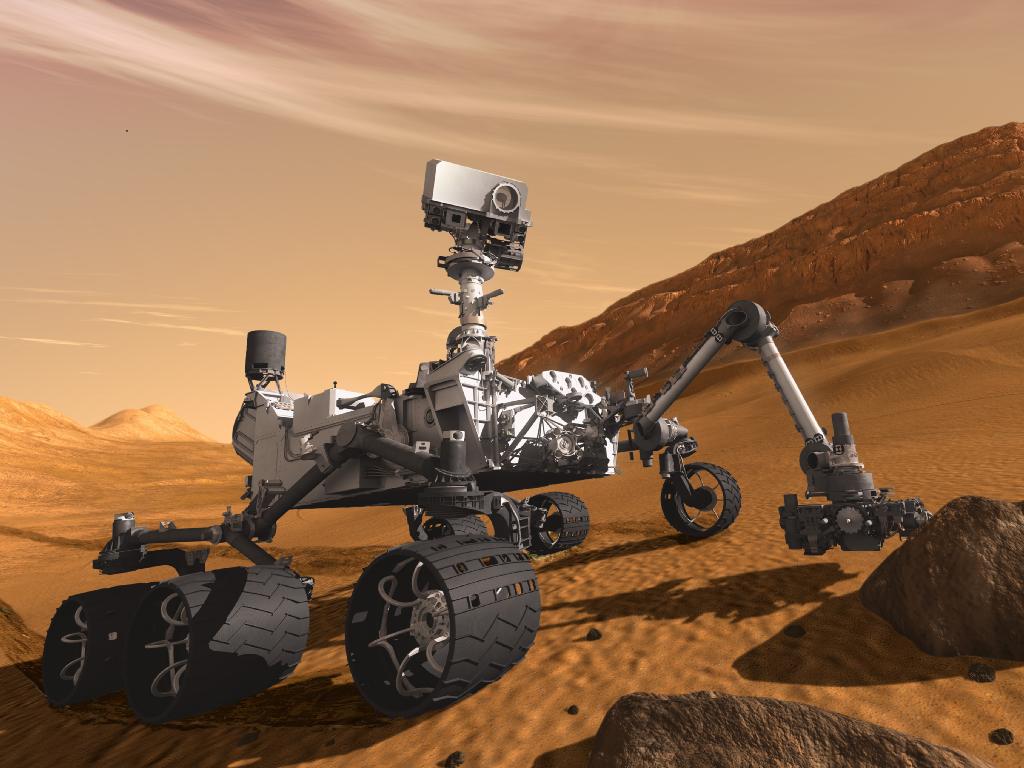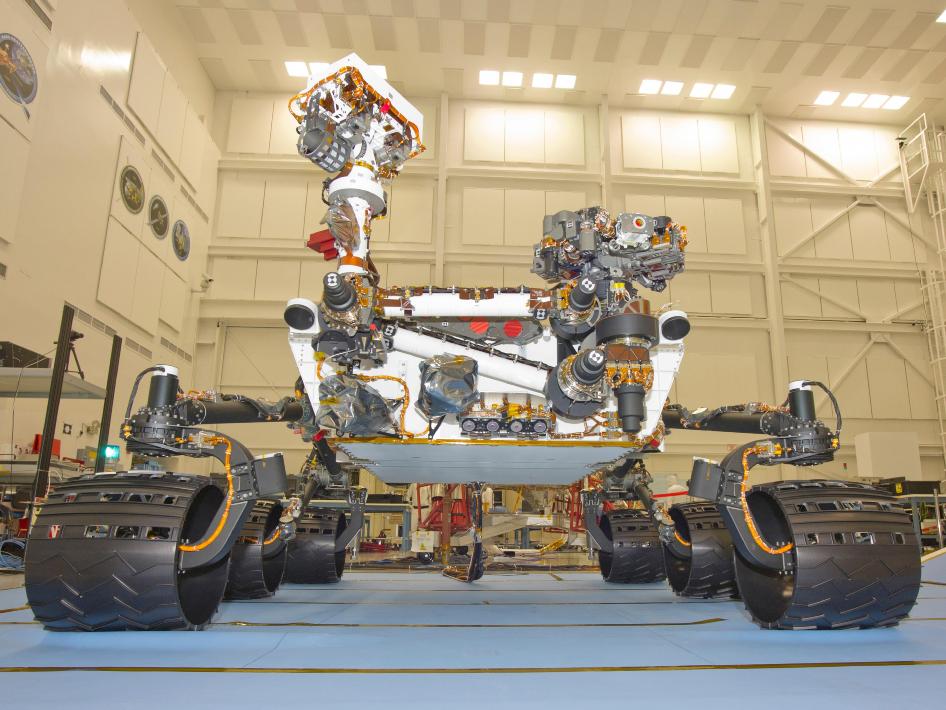Next Mars Rover's High-Tech Landing May Raise Contamination Risks

Earth microbes trying to make it to the planet Mars must survive sterilization in NASA's clean rooms, harsh cosmic rays during months of space travel and the Red Planet's unforgiving surface environment.
But any bacteria that successfully hitchhike aboard the wheels of NASA's Mars rover Curiosity in 2012 might manage to scratch out a brief existence on the Martian surface.
That finding comes from a study that examined how the new high-tech landing technique of Curiosity, the centerpiece of NASA's $2.5 billion Mars Science Laboratory (MSL) mission, may affect the risk of contaminating Mars.
MSL will use both a parachute and downward-firing thruster rockets to slow its descent so that its "sky crane" can lower the SUV-sized Curiosity onto the surface in August 2012 — a direct touchdown that may give microbes a brief chance to experience life on Mars. [Video: Curiosity to Make Unusual Landing on Mars]
That translates into a higher risk of contamination when compared to some past Mars rover missions, said Andrew C. Schuerger, a microbiologist at the University of Florida and the Space Life Sciences Lab at NASA's Kennedy Space Center in Florida. But he added that microbes still face tough odds for surviving space travel and Martian conditions.
"Although this paper suggests we could be transferring bacteria to Martian surface, we don't know for certain yet," Schuerger said. "We could very well be losing most due to the exposure to vacuum in space, cosmic rays and hard radiation. Even if cells are present on a rover wheel at launch, they might be dead by the time they get to Mars."

Standing still
Get the Space.com Newsletter
Breaking space news, the latest updates on rocket launches, skywatching events and more!
Schuerger and his colleague, Krystal Kerney, wanted to find out whether the wheels of Mars rovers past and future could contaminate the Martian surface. They ran two experiments simulating the contamination possibilities for MSL versus the Mars Pathfinder mission of 1997 and the Mars Exploration Rovers (MER) that landed on the red planet in 2004.
The Mars Pathfinder rover, called Sojourner, sat on a landing platform for two Martian days before rolling onto the surface. The twin MER rovers, Spirit and Opportunity, sat on their landing platforms for 12 and seven Martian days, respectively. Each Martian day is just a little over 24 hours.
In the recent study, researchers simulated a Mars rover sitting on a landing platform for one, three and six hours while being exposed to Martian levels of ultraviolet (UV) rays. Even such short amounts of time killed between 81 percent and 96.6 percent of the Bacillus subtilis bacteria used in the experiment.
"We did very short UV exposures, and even there we see 96 percent [of bacteria killed] over six hours," Schuerger told Astrobiology Magazine. "That's a very dramatic and a very positive sign that a rover wheel which sits on a platform, like MER did, has a much better chance of being sterilized prior to roll-off than a direct-to-ground system."
The number of survivors would likely have dropped to practically zero if the experiment had run for seven or 12 days, Schuerger said. [Photos: Gale Crater, Curiosity's Landing Site]

Rolling in the dirt
By contrast, the second experiment simulated how a rover wheel in the future MSL mission would immediately come into contact with the Martian surface. When the contaminated rover wheel rolled over the simulated surface, about 31.7 percent of the surface samples ended up showing bacterial growth.
But the contamination level dropped by 50 percent after 24 hours of exposure to simulated Mars conditions, such as UV radiation, low pressure, low temperature and high levels of carbon dioxide. The results pointed once again to the harshness of the Martian surface environment for Earth life.
The second experiment doesn't say anything definitive about the real risk of contamination, Schuerger cautioned. For instance, it didn't test whether having multiple wheels rolling over the same surface area could bury microbes from the first wheel. It also didn't simulate the weight of the SUV-sized Curiosity rover, which could mash even more microbes into the ground.
On the other hand, the researchers contaminated the rover wheels with perhaps 100,000 times more bacteria than would realistically exist during any of the Mars rover missions. Some Mars rovers get sterilized three or four times, Schuerger said. He added that the journey through space may kill 75 percent of whatever survived after launch.
The next test
What the experiments do suggest is that just having the Curiosity rover sit still for a number of days could help kill off much of the bacteria clinging to its wheels. But the researchers still have questions to answer.
"We need to repeat these experiments with much longer time exposures to Martian conditions to see if we can get to a rover wheel completely sterilized sitting on a landing pad," Schuerger explained. "We also need to see if seven or eight Martian days would essentially get to zero amount of survivors, even if we accidentally transferred bacterial spores to the surface."
Such contamination experiments could be done more easily once humans establish a Mars colony and can work alongside their robotic rovers, Schuerger said. But for now, he will have to make do with small Mars simulation chambers on Earth.
The study was detailed in the June 2011 issue of the journal Astrobiology.
This story was provided by Astrobiology Magazine, a web-based publication sponsored by the NASA astrobiology program.
Join our Space Forums to keep talking space on the latest missions, night sky and more! And if you have a news tip, correction or comment, let us know at: community@space.com.
Jeremy Hsu is science writer based in New York City whose work has appeared in Scientific American, Discovery Magazine, Backchannel, Wired.com and IEEE Spectrum, among others. He joined the Space.com and Live Science teams in 2010 as a Senior Writer and is currently the Editor-in-Chief of Indicate Media. Jeremy studied history and sociology of science at the University of Pennsylvania, and earned a master's degree in journalism from the NYU Science, Health and Environmental Reporting Program. You can find Jeremy's latest project on Twitter.










